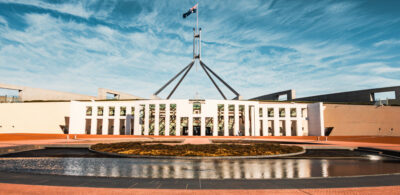NSW and SA State Budgets 2021-22: where is NSW’s new property tax regime?
23 June 2021
On 22 June 2021, both New South Wales and South Australia released their state budgets for 2021-22.
Despite early speculation, the NSW Budget does not herald the phasing-out of stamp duty in lieu of a ‘property tax’ regime. Rather, the NSW Government has kept its tax base largely unchanged, and would seem to be relying, in the short-to-midterm, on stamp duty to bolster its budget position.
New South Wales
The NSW Government largely avoided announcing major tax reforms, the notable exception being the introduction of a ‘land value contribution’ mechanism in the Environmental Planning and Assessment Amendment (Infrastructure Contributions) Bill 2021 (Bill). This new measure in the Bill follows a similar announcement by the Victorian Government of a ‘windfall gains tax’ last month (details of which are yet to be made available).
The Bill proposes enabling local councils and other development consent authorities (such as the Minister for Planning and Public Spaces) to specify ‘land value contributions areas’ within development contributions plans. Contributions areas are intended to capture land that has seen an increase in value from government infrastructure investment or land rezoning.
When a contributions area is declared, land within the area is subject to a ‘charge’ which restricts the transfer of the land until the charge is satisfied. A vendor or purchaser of land within a contributions area will be required to apply, in most cases to the relevant local council, for an assessment of any land value contribution payable prior to transfer of the land. The council must determine the value of the contribution in accordance with the applicable development contributions plan and the regulations.
Similar to stamp duty, an instrument of transfer must be endorsed with a land value contribution assessment number in accordance with arrangements approved by the Chief Commissioner of Taxation, before the transfer of the land can be registered.
The way in which the contribution and the underlying land value will be calculated is not specified in the Bill, and will be provided for through regulations once the Bill is passed. The commencement date of these measures is presently unclear.
What happened to NSW’s property tax reforms?
Substantive structural changes to stamp duty and property tax are, at least for the moment, confined to consultation. Earlier this month the NSW Treasury released its NSW Property Tax Proposal Progress Paper which incorporates consultation feedback to date and clarifies the proposed operation of the property tax regime. NSW Treasury is requesting additional feedback through to 30 July 2021.
Key features of the proposed regime
We have summarised below the key features of the proposed property tax regime, as flagged by the NSW Treasury.
Annual tax based on unimproved land value
Similar to the levying of council rates, property tax liability will consist of a fixed amount plus a rate applied to the unimproved value of an individual property. The proposed rates are set out in the table below.
Property class | Annual fixed fee per property | Annual ad valorem rate (based on unimproved land value) |
Residential – owner-occupied | $400 | 0.3% |
Residential – investor-owned | $1500 | 1.1% |
Farmland | $0 | 0.3% |
Commercial | $0 | 2.6% |
Property tax surcharge on aggregate landholdings above $1.5 million of unimproved land | N/A | 0.3% |
The property tax surcharge would not apply to principal places of residence or farmland.
Similar to the cap on council rate increases, the NSW Government is considering a system of indexation to ensure average property tax payments increase in line with average income. For an average property that has opted-in to the property tax, the amount of tax payable is proposed to change each year in line with an index of the growth of Gross State Product Per Capita.
Buyers given the choice to opt-in
At the point of purchase, buyers would be given the choice to pay property tax, or stamp duty and land tax (if applicable). Once a property is subject to the property tax, subsequent owners would be required to pay property tax.
Foreign purchasers are not proposed to be allowed to opt-in a residential property to property tax and may continue to be liable for the foreign investor duty surcharge. If a foreign resident acquires a property that is already paying property tax, they are proposed to be required to pay the annual property tax in addition to any foreign investor surcharges.
Price thresholds
Price thresholds are to be used to limit the number of properties initially eligible to opt-in to property tax. However, it is anticipated that over 80% of residential properties would be eligible to opt-in from ‘day one.’
Residential developments
Properties that are being developed for residential use are proposed to be subject to the commercial rates of property tax during development. Residential rates are then proposed to apply once a property is capable of being occupied as a dwelling.
Commercial properties with a residential use
It is proposed that residential asset classes that do not constitute dwellings (e.g. hotels) would generally be subject to the commercial property tax rates (unless eligible for a land tax exemption, in which case a lower rate would apply). Whether an asset is treated as residential or not would be determined in accordance the equivalent stamp duty and land tax tests.
Mixed-use properties
It is proposed the property tax will be apportioned based on an ‘apportionment factor’ recorded by the Valuer-General. When acquiring a mixed-use property, the commercial price thresholds would apply to determine eligibility to opt-in.
Build-to-rent
NSW Treasury has noted that it needs more time to consider the effect of the land tax concession provided to build-to-rent projects from 2020 before deciding whether to extend equivalent relief to the property tax regime.
Presently, it is proposed that if a build-to-rent project is undertaken on a property that has opted-in to the property tax, a fixed charge would be applied to each dwelling on the site once the development is completed.
The existing treatment of foreign build-to-rent developers is proposed to be maintained.
Subdivisions
Each new property created as a result of a sub-division is proposed to remain in the same tax system as the property before the sub-division.
Rent increase protection
Protections are proposed to apply so that property tax does not result in rent increases without a tenant’s agreement. In particular, the property tax regime would allow commercial landlords to continue to pass-through the amount of any land tax that would have been payable if the property had not been opted-in to property tax. However, landlords would not be permitted to pass-through amounts of property tax exceeding the land tax that would have otherwise been payable, subject to any contractual agreement to the contrary.
First home buyers
Existing stamp duty concessions for first home buyers would be replaced with a grant of up to $25,000.
Property tax exemptions and concessions
The NSW Government has indicated that property tax relief would follow four general principles:
- If, under the current system, a taxpayer would be exempt from stamp duty at the time of purchase and would also be exempt from land tax, that taxpayer would be exempt from property tax;
- If, under the current system, a taxpayer would be exempt from stamp duty at the time of purchase, but would not be exempt from land tax, that taxpayer would not be exempt from property tax;
- If, under the current system, a taxpayer would be required to pay stamp duty at the time of purchase, but would be exempt from land tax, that taxpayer would be required to pay a concessional rate of property tax; and
- Existing stamp duty and land tax exemptions would remain for properties that are not opted-in to property tax.
South Australia
Like NSW, South Australia has steered clear of implementing significant tax reforms in its latest budget. The most significant tax measure announced in South Australia’s 2021-22 Budget is arguably directed at the build-to-rent sector which is to benefit from a 50% land tax discount. Although the precise details of this measure are not yet available, the budget papers indicate that:
- relief will only be available for ‘eligible build-to-rent projects’ where construction commences from 1 July 2021; and
- the discount will be effected by reducing the assessed land value of eligible projects for land tax purposes by 50% until the 2039-40 land tax year.
Tax reform: possible impacts and implementation
Overall, NSW’s proposed property tax reforms generally seem to benefit residential property developers. The ability to opt-in creates short-to-mid-term flexibility, while the levying of property tax against unimproved land value rather than improved property value might be attractive to purchasers of high rise properties.
The additional visibility over the proposed reform is welcomed, but there are still unanswered questions such as for example, what is to be the approach in scenarios involving tenants-in-common? The further round of consultation in NSW shows the level of complexity in implementing the new regime and the devil will be in the detail.
Authors

Partner

Head of Environment and Planning

Head of Gender Equality

Senior Associate
Tags
This publication is introductory in nature. Its content is current at the date of publication. It does not constitute legal advice and should not be relied upon as such. You should always obtain legal advice based on your specific circumstances before taking any action relating to matters covered by this publication. Some information may have been obtained from external sources, and we cannot guarantee the accuracy or currency of any such information.
Key Contact
Other Contact
Head of Environment and Planning



